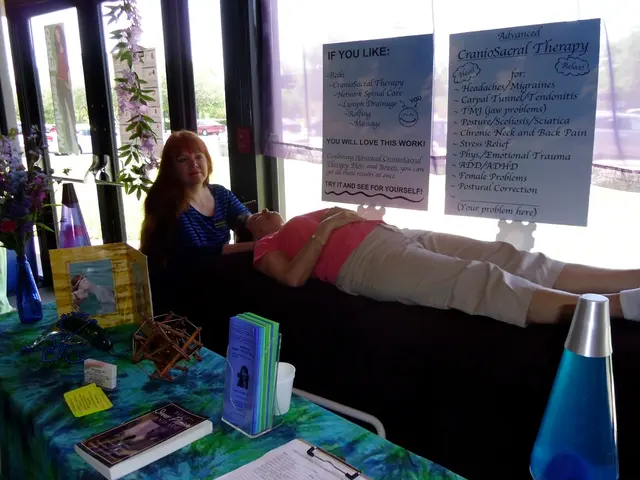Embracing the "Anti-Glow-Up" Movement: A Call for Self-Acceptance and Diversity
Embracing Delicacy Over Polished Perfection: A Tribute to Natural Beauty
In a world where societal beauty standards often lean towards Eurocentric ideals, a potential movement known as the "Anti-Glow-Up" is gaining attention. While specific details about this movement are scarce, its core principles seem to revolve around challenging traditional beauty standards and promoting self-acceptance and diversity.
Traditional Feminine Beauty Ideal and Its Challenges
The traditional feminine beauty ideal often emphasizes fair skin and straight hair, which can exclude women of color, particularly Black women. This can lead to colorism, where darker-skinned individuals are perceived as less beautiful or less desirable. However, movements against colorism and for inclusivity in beauty are gaining traction.
The Significance of Challenging Traditional Beauty Standards
Challenging traditional beauty standards is significant because it promotes inclusivity, fights colorism, and supports diversity in media. It encourages acceptance of diverse beauty, including darker skin tones and non-Eurocentric features.
The "Anti-Glow-Up" Movement: A Celebration of Self-Acceptance
If the "Anti-Glow-Up" movement were to exist, it would likely focus on critiquing societal pressure to conform to traditional beauty ideals and promoting self-acceptance and diversity. Softness in the "Anti-Glow-Up" culture is seen as a powerful form of strength. The movement champions mindfulness, self-awareness, acceptance, and emotional resilience.
Supportive communities play an essential role in the "Anti-Glow-Up" movement, offering validation, affirmation, and opportunities for individuals to share their struggles and celebrate their authentic selves. Vulnerability allows for deeper connections and emotional intimacy.
Practical Tips for Embracing the "Anti-Glow-Up"
Practical tips for embracing the "Anti-Glow-Up" include practicing self-compassion, limiting social media use, prioritizing mental health, redefining success, and embracing authenticity in fashion and personal expression. Setting boundaries like limiting screen time or scheduling social media breaks can help reduce the mental load and prevent feelings of inadequacy.
Self-reflection is an essential practice in embracing the "Anti-Glow-Up," helping shift the focus from external validation to internal progress. It values emotional depth, mental health, and self-acceptance over outward appearance.
The "Anti-Glow-Up" and Relationships
Relationships based on authenticity, empathy, and mutual support are more fulfilling than those based on image or external appearance. The "Anti-Glow-Up" calls for a shift toward authenticity in an over-filtered world.
Progress and the "Anti-Glow-Up"
Progress is about recognizing where you were yesterday and acknowledging how far you've come, celebrating incremental advancements in emotional health, personal growth, and relationships. The constant stream of perfect images on social media often leaves individuals feeling inadequate and in competition with an idealized version of reality.
The "Anti-Glow-Up" is not about rejecting self-improvement, but rather a more holistic and compassionate approach to personal growth. Mindful practices like meditation, yoga, and journaling help individuals check in with their emotions and release the need to strive for perfection. A social media detox can help individuals pay more attention to their real lives, emotions, and self-worth, and promote self-reflection and authentic connection.
The "Anti-Glow-Up" and Inner Beauty
The "Anti-Glow-Up" movement is a rebellion against unattainable beauty standards. It promotes the idea that true beauty comes from within. The movement encourages embracing softness, vulnerability, and authenticity over external standards.
In conclusion, the "Anti-Glow-Up" movement, if it exists, is a call for a more inclusive, compassionate, and self-aware approach to beauty and personal growth. It encourages individuals to embrace themselves as they are, imperfections and all, and to focus on inner beauty, emotional health, and authentic connections.
- Yoga and meditation, as mindful practices, are integral to the "Anti-Glow-Up" movement, helping individuals tap into their inner strength and emotional resilience.
- The health-and-wellness sector plays a crucial role in supporting the "Anti-Glow-Up" movement, with a focus on mental health, emotional well-being, and self-awareness.
- The fashion-and-beauty industry can contribute to the movement by embracing diversity in models, promoting inclusivity, and celebrating authenticity in personal expression.
- Education-and-self-development platforms can foster personal growth through programs and resources that emphasize self-acceptance, self-compassion, and emotional intelligence.
- The "Anti-Glow-Up" movement aligns with the principles of the lifestyle sector, which values authenticity, vulnerability, emotional connection, and wellness over superficial appearances and toxic beauty standards.
- The science behind the "Anti-Glow-Up" movement lies in understanding the impact of societal beauty standards on mental health, self-esteem, and overall well-being, and implementing strategies to combat these negative effects and promote a healthier, more inclusive mindset.




